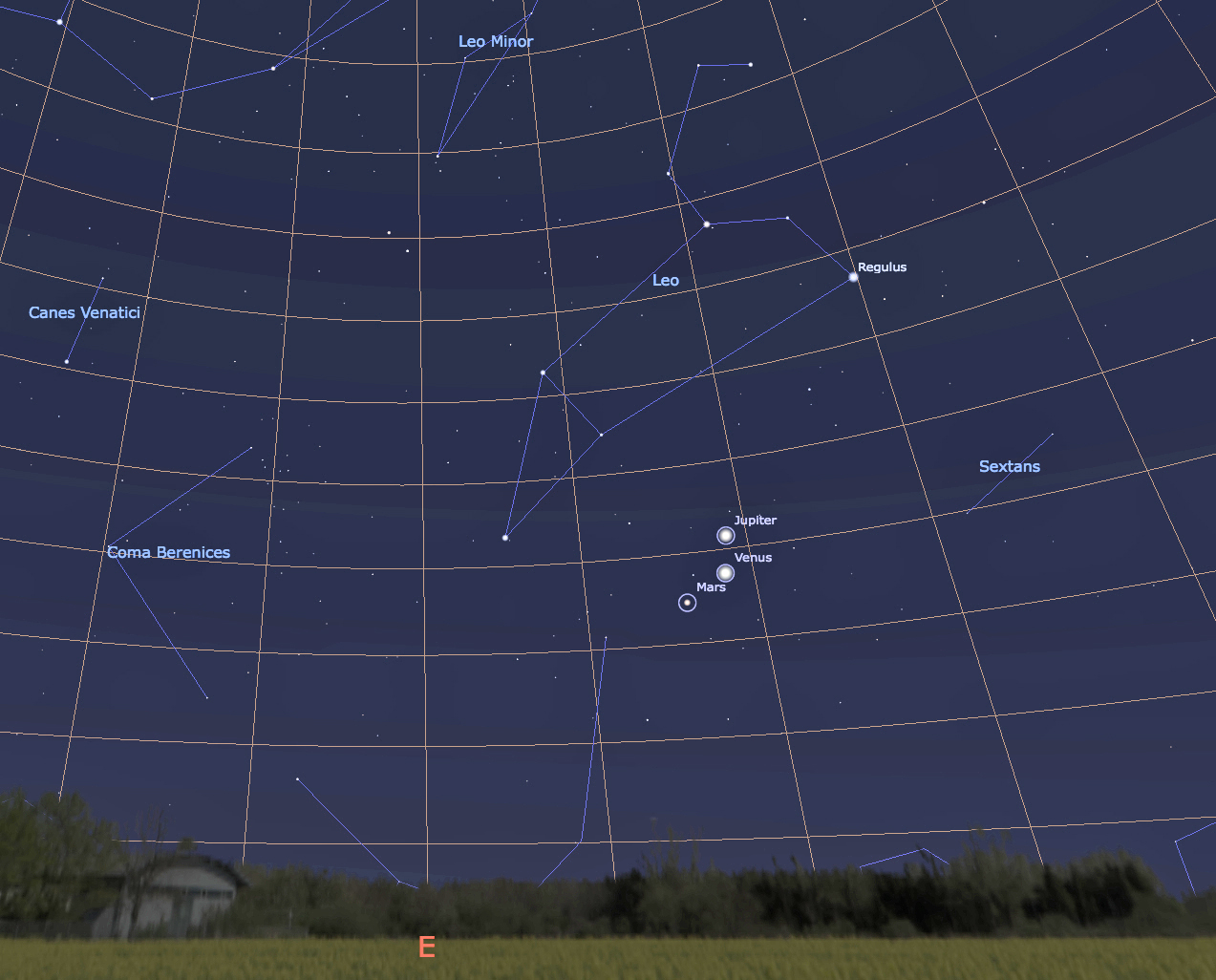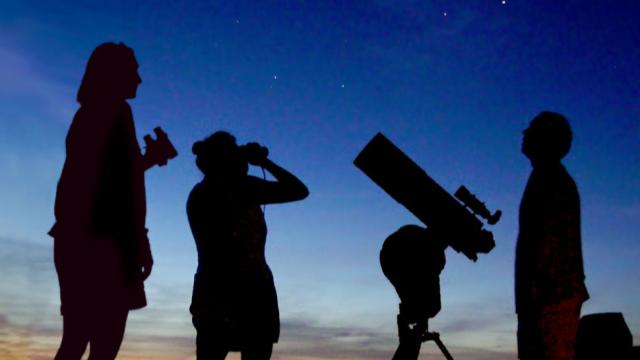Over the next several nights, skywatchers will be treated to a cool celestial sight as Venus, Mars, and Jupiter hang out together in the morning sky. Here’s what you need to know about the rare conjunction and how to watch.
From now until the first week of November, the brightest planets in the night sky — Venus, Mars, and Jupiter — will appear as a bright trio of dots in the hours just before dawn. And you don’t need a telescope or binoculars to see it. This rare conjunction won’t happen again until January 2021.

Credit: Armagh Observatory
The best time to see the planets will be just before sunrise towards the east, all over in the world, wherever there are clear skies.
The brightest and largest will be Venus. Gas giant Jupiter will appear about 12 times dimmer, and Mars 250 times dimmer. Mars will appear in a roughly ESE direction at a height of about 25 degrees above the horizon, while Jupiter will appear slightly higher.
Here’s how amateur astronomer Ian Musgrave from the University of Adelaide explained it to ABC News:
As Jupiter is rising higher in the sky, having just come out from behind the Sun at the end of last month — and the same with Mars — as they move further along in their orbits they catch up with Venus, which has pretty much reached the furthest point of its orbit before it starts coming back in towards the Sun again.
So they will come very close to each other because of orbits of the planets are mostly in the same plane.
They can get very, very close or moderately close and in this particular case if you’ve been up at about five o’clock in the morning, you’ll have been able to see Venus and Jupiter strung out in a line just above the horizon.
The planets aren’t actually closer together in a literal sense. They’re still millions of miles apart, but they have reach a point where they appear aligned from our perspective on Earth. As Sam Lindsay of the Royal Astronomical Society told the BBC, the grouping is random, and the planets are “carrying out their own orbits of the sun, which take different amounts of time to carry out, and have reached a point where they appear aligned in the Earth’s skyline.”
The crescent moon will join the planets next week.
“On November 7, Jupiter and the crescent Moon are very close, with Venus and Mars below them,” noted Musgrave at ABC News. “Then on the eighth, you’re going to have the two planets, Mars and Venus, quite close together and quite close to the Moon so that will all look really fantastic in the early morning.”
[ Armagh Observatory | BBC | ABC ]
